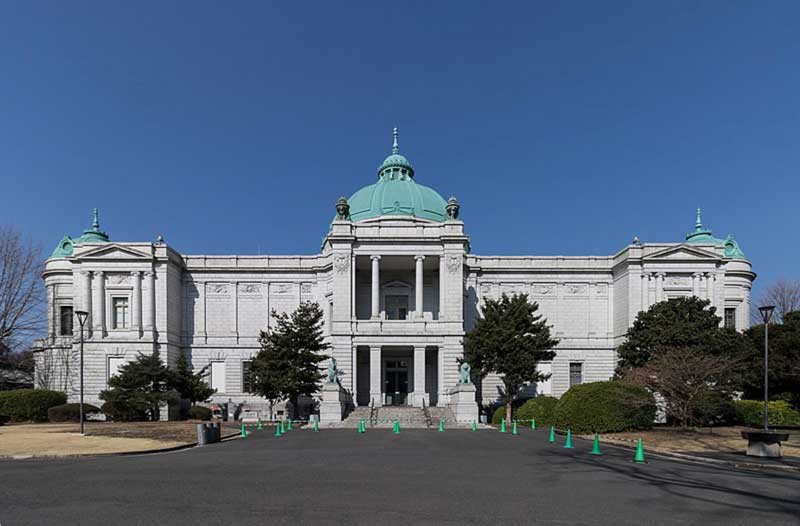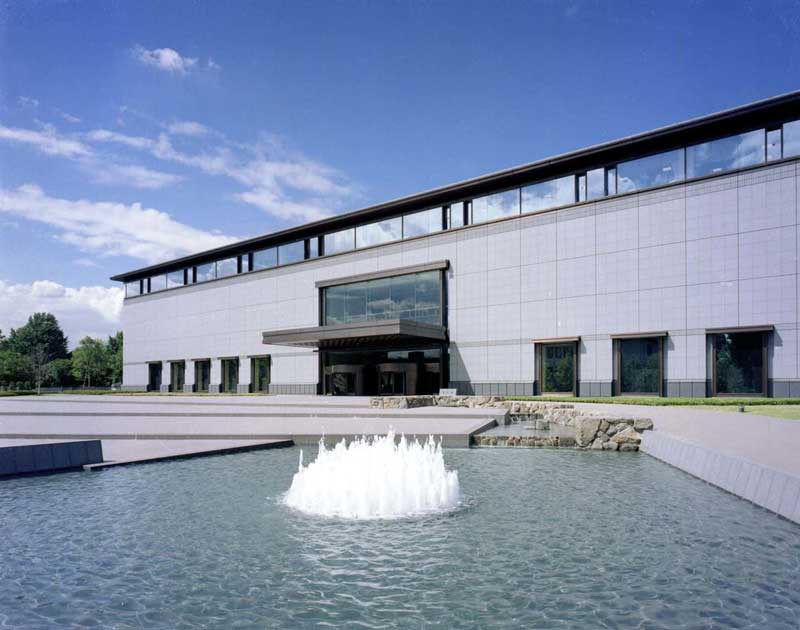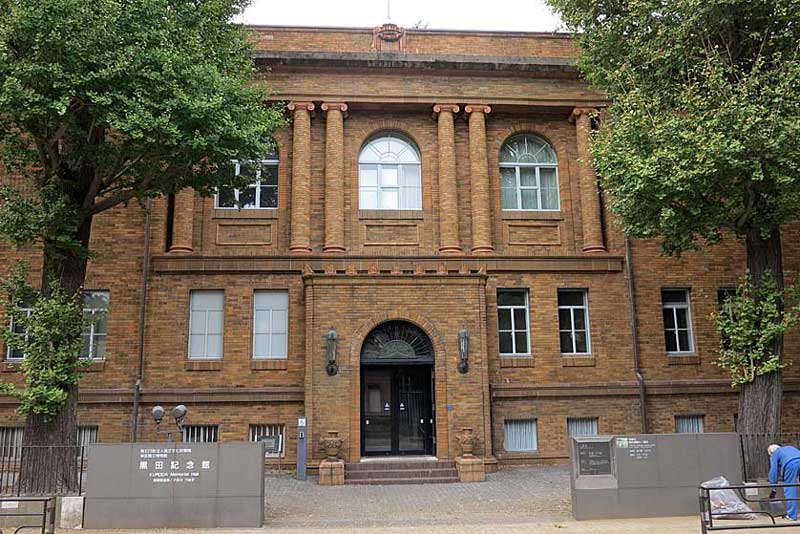
Considered the oldest and largest art museum in Japan, the Tokyo National Museum, located in Ueno Park in Tokyo, is one of the four museums operated by the National Institutes for Cultural Heritage, which also include the Kyoto National Museum, the Nara National Museum and the Kyushu National Museum. With a focus on ancient and medieval Japanese art, the museum preserves and exhibits a comprehensive collection of artwork and cultural objects from Asia, along with a large collection of Greco-Buddhist art. Its collection of art and archaeological artefacts in Japan, consisting of more than 110,000 individual items, includes numerous national treasures.

Formed in 1871, the original collection, comprising a concoction of historical, scientific, technological and artistic exhibits, composed mostly of Japanese objects, was initially housed in different buildings temporarily and exhibited at different international expositions, as in Paris in1867 and 1878 and Vienna in1873. Finally, in 1882, the collection was shifted to its present site in Ueno Park and came under the supervision of the Ministry of the Imperial Household in 1886. The museum houses a wide variety of Japanese art, which includes painting, sculpture, calligraphy and architectural model, metalware, lacquerware and pottery, dyeing and weaving.
Apart from that, it has a commendable collection of pre and protohistorical objects, ethnic and historical materials, Oriental art and archaeological objects. In addition to that, the museum has an enviable collection, known as the Horyuji Treasures, made up of over 300 pieces of Buddhist art

The museum went through several name changes. While the original 1872 exhibition was known as the Museum of the Ministry of Education, later it came to be known simply as the Museum and then the Museum of the Museum Bureau. In 1888, the museum was renamed the Imperial Museum, as it came under the Ministry of the imperial household. However, with the opening of other museums, the name changed to the more specific Tokyo Imperial Household Museum in 1900. Following the imposition of the governmental reforms after World War II, it was further renamed the National Museum in 1947 and the Tokyo National Museum in 2001 However, sometimes it is also referred to as the Ueno Museum.

The huge complex of the Tokyo National Museum, located in Ueno Park, contains six separate buildings, each containing specialized types of art and artefacts. While the entire park was handed over to the museum in January 1876, its facilities were not completed until 1881, when the original Honkan building was completed in time for the second National Industrial Exhibition. The Honkan building was constructed on the site of the Kaneji Temple, which was destroyed during the Boshin War, also known as the Japanese Civil War, fought from 1868 to 1869.
The museum was ceremoniously opened on 20 March 1882, attended by Emperor Meiji. Unfortunately, the building was severely damaged in the Great Kanto earthquake of 1923, when its contents were moved to the undamaged Hyokeikan building. Much later, the present Honkan building was opened to the public in 1938, with a ceremony attended by Emperor Hirohito. While exhibiting a variety of Japanese artwork from ancient times to the 19th century, it also displays antique Buddhist statues, ancient scrolls and maps, ceramics and painted sliding doors, in addition to cultural items such as masks, costumes, armour and weapons among other historical artefacts.

The high-domed Hyokeikan building, which stands to the left of the Honkan, is the oldest structure in the complex, opened in 1909, in honour of the wedding of Crown Prince Yoshihito, later Emperor Taisho and Empress Teimei on 10 May 1900. The building, reflecting Western-influenced architecture of the late Meiji period, is primarily used for temporary exhibitions and has undergone several renovations over the years to maintain its dignified grace.

Designed by Japanese architect Taniguchi Yoshiro, the Toyokan building stands to the right of the Honkan. Opened in 1968, the building has three floors above ground, plus two mezzanine floors, along with one basement floor and features galleries displaying Asian art and artefacts from China, Korea, Southeast Asia, Central Asia, India and Egypt.
Its exhibits include some superb examples of Gandhara art, which once thrived in what is now present-day Pakistan and Afghanistan. While its basement is dedicated to Khmer sculpture, Indian miniature paintings, as well as textiles from around Asia, the upper floors concentrate mainly on art from neighbouring China and Korea, which include very early pieces from the dawn of Chinese civilization, Chinese decorative arts, relief carvings, Chinese painting and calligraphy.

The Heiseikan building, which stands just behind the Honkan building, is a fairly recent addition to the museum. Constructed to commemorate the wedding of the then Crown Prince, later Emperor Naruhito and Empress Masako on 9 June 1993, the building was opened in 1999. While it hosts regular special exhibitions in the four large galleries on its second floor; its first floor houses the Japanese Archaeology Gallery, a space for temporary exhibits, a spacious lounge, a café, an auditorium, and lecture and orientation rooms. The Japanese Archaeology Gallery on its first floor exhibits several items relating to ancient Japanese culture and includes potteries, talismans, masks and articles of daily life from the prehistoric period in the country.

The newest building in the complex, the two storey Horyuji Homotsukan or the Gallery of Horyuji Treasures, was designed by Yoshio Taniguchi and opened in 1999. It contains a collection of 319 relics consisting mostly of small, but intricate statues and copper relief images. The items were gifted to the Imperial Household in 1878 by the Horyu Temple in Nara, which were later handed over to the National Museum for safekeeping and preservation. Besides the gallery, the building contains a Reference Room, located on a mezzanine between the two floors, equipped with a digital archive, which helps the visitors to view the entire collection with explanations in several languages like Korean, Chinese, English, French and German, apart from Japanese. The building also houses a restaurant on the first floor.

The Kuroda Memorial Hall, designed by Okada Shinichiro and located northwest of the main museum compound, was built in 1928 from donations by Kuroda Seiki, a Japanese artist, regarded as the father of modern Western-style painting in Japan. The hall houses 126 oil paintings and 170 drawings created by Kuroda, along with his sketchbooks and other artworks, which were donated by his family. The exhibition arena on the second floor consists of 4 rooms, namely the Kuroda Memorial Room, the Reading Room, the Audiovisual Room and the Collection Highlights Gallery. The building also has a cafe on its first and second floor.

Besides the exhibition halls, located in the multiple museum buildings, the Tokyo National Museum also offers a neatly maintained Japanese style garden and multiple shops, teahouses and cafes spread out around the grounds.